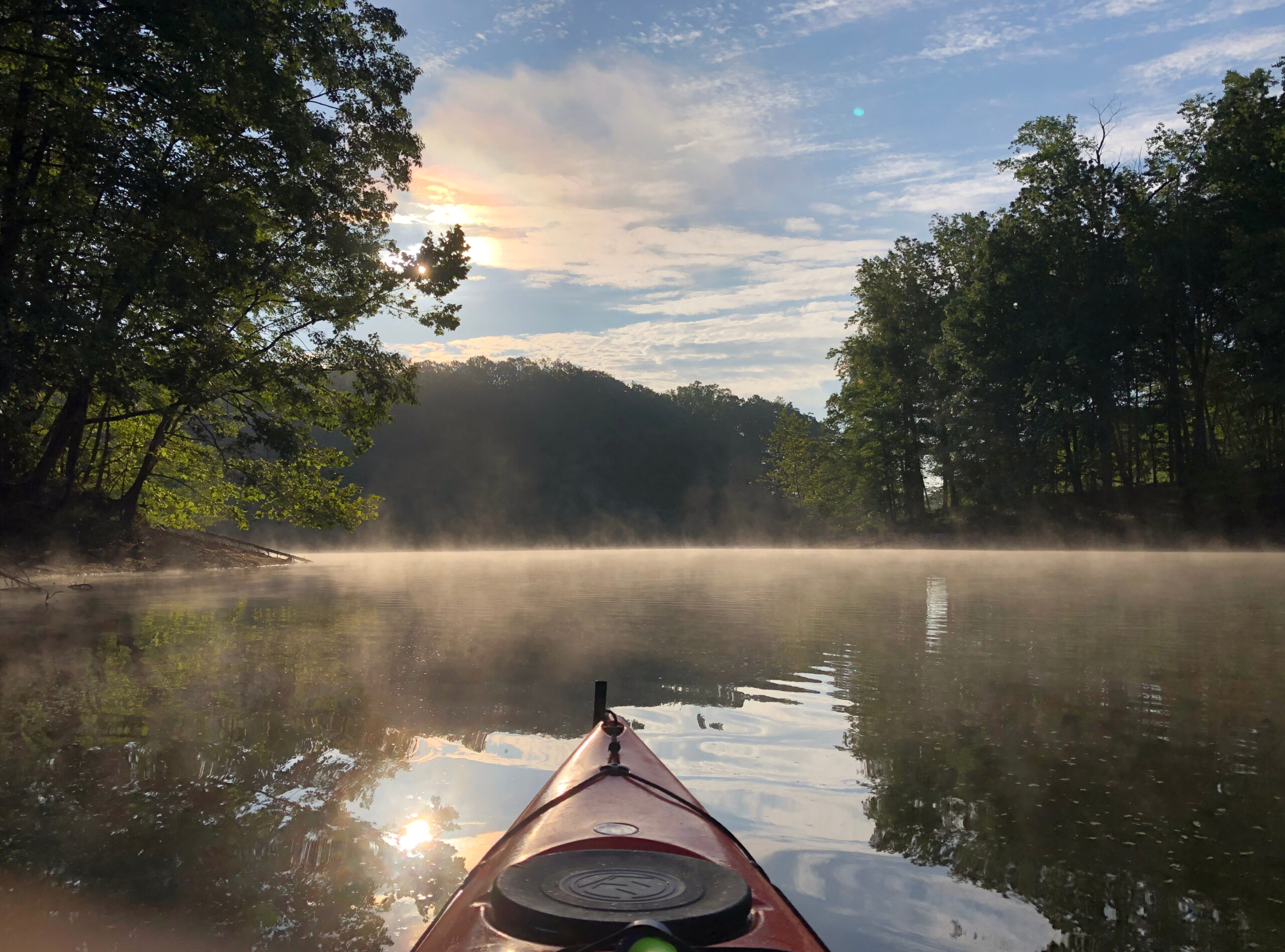Today was my second time on the water this year. My goal every season is to get out once a week, but I have yet to achieve it, mainly because I don’t like going out when it’s extremely hot. As a result, most of my paddling tends to be in May-June and September-October. We’ll see how the rest of this year goes.
Today, I went to Homeport Farm Park in Edgewood and paddled on Church Creek. I typically try to get there once or twice a season. Noteworthy is that instead of my kayak, I used the inflatable stand-up paddleboard that I bought for Cathy in December 2023. It is an AquaGlide Cascade 11′ which I bought on closeout at REI. It was our first time using it anywhere except the pool. 2024 was a bust, because I left the board out in the sun by the pool while it was fully inflated, and it sprung a leak in the seam. I was able to repair it with HH-66 vinyl adhesive (link to helpful video), but didn’t get around to that until late fall, so this year was my first opportunity to take the board out on the water.
Inflating the SUP with a hand pump can be tiring. As the pressure increases, it gets harder and harder to operate the pump, due to the increased resistance. The optimum pressure for the board is around 14-16 PSI, but by 10 PSI, I’m ready for a break. If we end up using the board frequently, it may make sense to invest in an electric pump. For local trips, I bought a Yakima SUPDawg roof rack mount, and I tried that out for the first time today. It was easy to use, and did a nice job keeping the board secure up on the roof. To avoid bursting seams, I transported the board at around 10 PSI, and finished inflating it when I arrived at the launch. Then, I let some air out of it before driving home. I don’t think I’d want to transport it on the roof for long distances (e.g. to the shore) but the SUPDawg does seem to work really nicely for shorter trips, and it saves time on days when I’m on the clock (which, TBH, is most days). Plus, if we ever buy a non-inflatable board, we have a way to transport it.
It took a little while to get comfortable on the board. At first, I was really shaky and a little panicky. It also took some time to figure out how to paddle straight. It’s nothing like paddling a kayak. I did fall off once, when I made the rookie mistake of paddling into shallow water. The skeg hit a submerged log, the board stopped suddenly, and I lost my balance. Lesson learned: in shallow water, kneel on the board. I will say that it’s much easier to get back on the board than it is to get back into a kayak. No paddle float or bilge pump needed!
All in all, I paddled around 2 miles. By the time I was finished, I was able to paddle straight and steer the board where I wanted, and I could smoothly transition between kneeling and standing. I really enjoyed myself, and I’ll probably try to do this more often this year. The board is a crap-ton lighter than my roto-mold kayak, which my back appreciates, especially this time of year.
